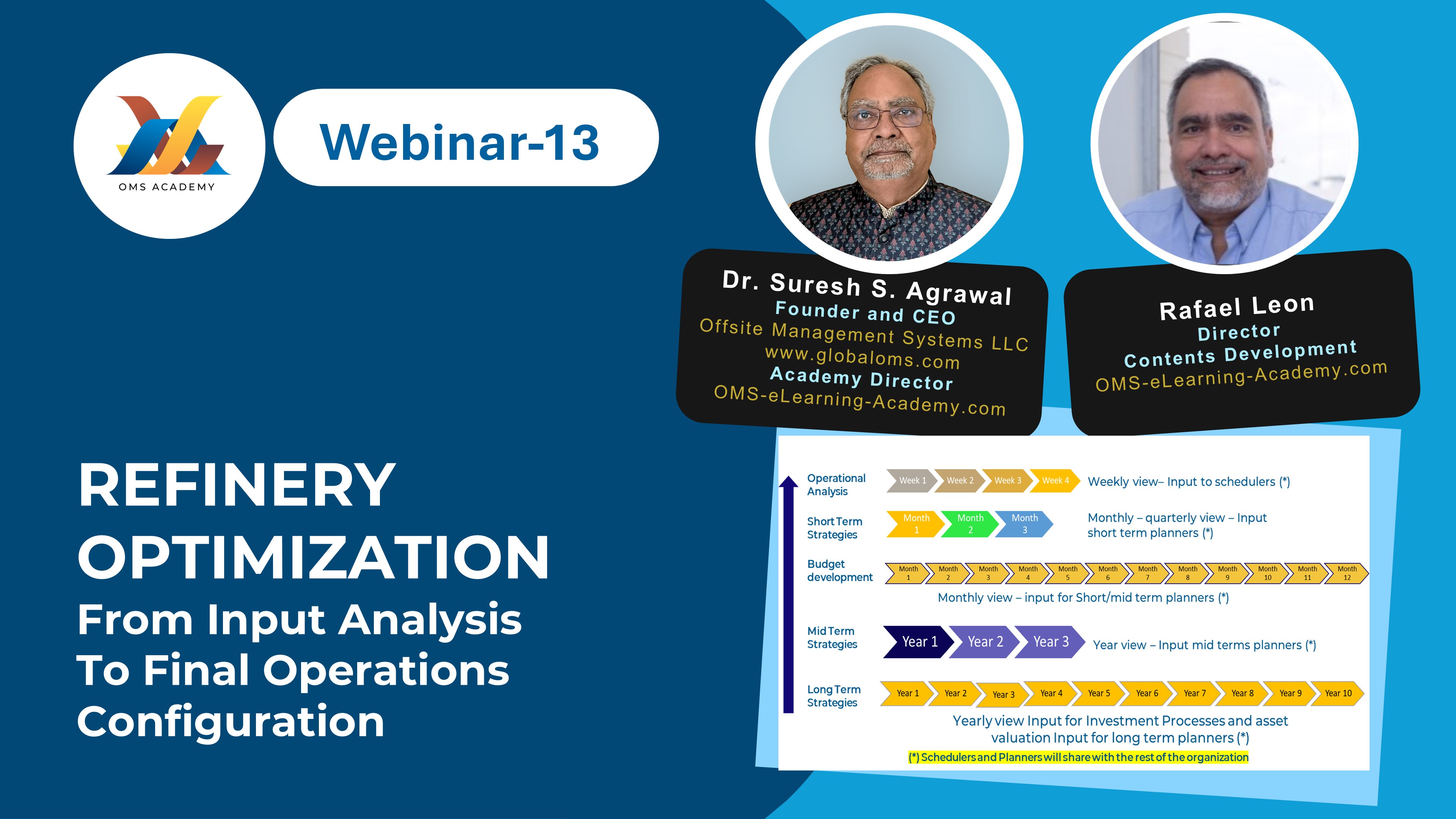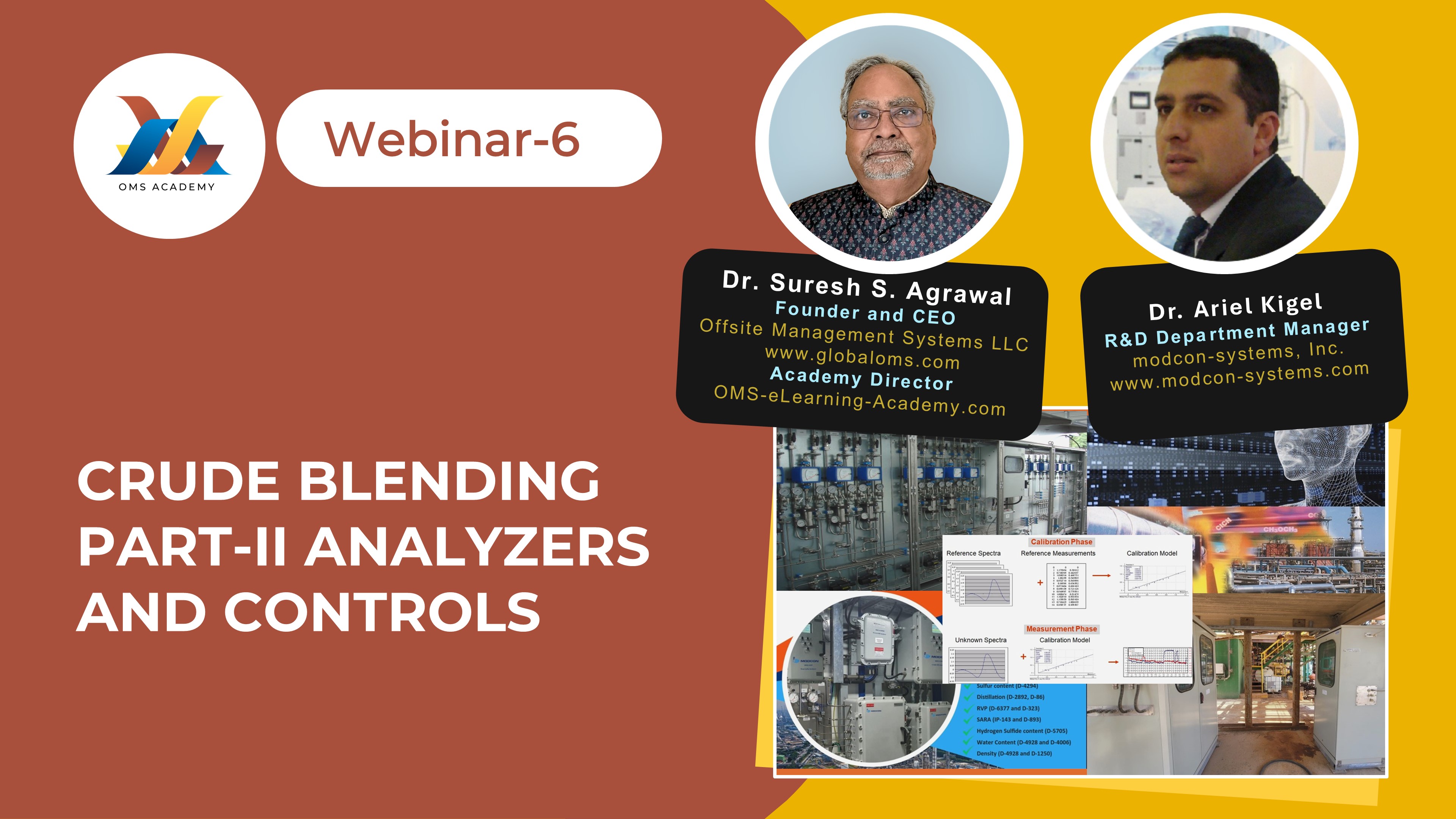About The Webinar
Discover how advanced AI and ML technologies are revolutionizing fuel blending, eliminating the need for traditional analyzers. Learn from industry experts about cutting-edge system architectures that enhance fuel production efficiency, accuracy, and cost-effectiveness.
What Will You Learn?
AI/ML System Architecture for Analyzer-Less Fuel Blending
In today's fast-evolving energy sector, integrating artificial intelligence (AI) and machine learning (ML) transforms traditional processes, enhancing efficiency and reducing costs.
One such revolutionary application is fuel blending. Traditional fuel blending relies heavily on physical analyzers to ensure the correct proportions of various components. However, AI and ML have paved the way for analyzer-less fuel-blending systems, offering a more streamlined, accurate, and cost-effective approach.
The Need for Innovation in Fuel Blending
Fuel blending is a critical process in the petroleum industry, where various hydrocarbon streams are mixed to produce fuels that meet specific standards and regulations. Conventional methods involve using analyzers to constantly monitor the blend's properties, ensuring the final product meets quality specifications. While effective, this approach is expensive and time-consuming due to the need for continuous calibration and maintenance of the analyzers.
AI and ML: The Game Changers
AI and ML bring a transformative potential to fuel blending by replacing physical analyzers with sophisticated algorithms capable of predicting and optimizing blend properties. Here's how these technologies are reshaping the landscape:
Data-Driven Predictions: AI systems can analyze vast amounts of historical and real-time data from various stages of the blending process. By learning patterns and correlations, these systems can predict the properties of a blend without the need for physical sampling and analysis. This predictive capability is faster and more adaptable to changes in raw material properties.
Optimization Algorithms: ML algorithms can continuously optimize the blending process by adjusting the proportions of different components to achieve the desired fuel characteristics. This dynamic adjustment ensures that the blend meets quality standards while minimizing the use of more expensive components, thus reducing overall production costs.
Real-Time Monitoring and Control: Advanced AI systems monitor the blending process in real time through digital twins and virtual sensors. These systems simulate the physical properties of the blend and provide instant feedback for corrective actions, ensuring consistent product quality.
Cost Reduction: By eliminating the need for physical analyzers, companies can significantly reduce maintenance costs and downtime associated with calibration and repairs. Furthermore, the optimized use of raw materials directly translates into cost savings.
System Architecture for Analyzer-Less Fuel Blending
Designing a robust AI/ML system architecture for analyzer-less fuel blending involves several key components:
Data Integration Layer: This layer collects and integrates data from various sources, including raw material properties, historical blending data, and real-time process parameters. Ensuring high data quality and consistency is crucial for accurate predictions.
Feature Engineering: The next step involves extracting relevant features from the raw data. This includes identifying key parameters influencing the blending process, such as temperature, pressure, and component ratios. Feature engineering helps transform raw data into meaningful inputs for the AI/ML models.
Machine Learning Models: The ML models are at the system's core. These models are trained on historical data to learn the relationships between input parameters and the resulting blend properties. Regression analysis, neural networks, and ensemble learning can be employed to develop robust predictive models.
Optimization Engine: This component uses the ML models to optimize the blending process continuously. By adjusting the input parameters in real time, the optimization engine ensures that the blend meets quality specifications at the lowest possible cost.
Real-Time Monitoring and Control Interface: A user-friendly interface gives operators real-time insights into the blending process. Visualizations such as dashboards and alerts help monitor the system's performance and take corrective actions when necessary.
Feedback Loop: To ensure continuous improvement, the system includes a feedback loop where real-time data and outcomes are used to retrain and update the ML models. This iterative process helps adapt to changes in raw material properties and process conditions.
Challenges and Future Directions
While the benefits of AI/ML in fuel blending are evident, several challenges need to be addressed:
Data Quality and Availability: Ensuring the availability of high-quality data is crucial for training accurate ML models. Incomplete or noisy data can lead to poor predictions and suboptimal blending outcomes.
Integration with Existing Systems: Integrating AI/ML systems with existing industrial infrastructure can be complex. Seamless integration requires careful planning and may involve upgrading legacy systems.
Regulatory Compliance: The fuel industry is heavily regulated, and any new technology must comply with stringent quality and safety standards. Ensuring regulatory compliance of AI/ML systems is essential.
Target Audience:
This webinar is designed for refinery managers, process engineers, and strategic planners keen on harnessing advanced optimization techniques to improve refinery performance and adapt to evolving market conditions.
Why Should You Attend?
Enhance Operational Efficiency: Gain insights into leveraging LP models for more intelligent, efficient operations.
Navigate Market Volatility: Equip yourself with the knowledge to adapt product outputs in response to market and regulatory changes.
Strategic Planning: Learn how to make informed decisions about infrastructure investments and modifications.
.
About OMS eLearning Academy
It provides a portal for the continuing education of refinery and related business professionals.
Professionals can make their curriculum from 200+ topics or enroll in 200+ structured courses.
Progressive eLearning mode courses can be taken anytime, anywhere, and on any device.
Issues course completion certificate and transcript with Continuing Education (CE) credits
Offers Flexible plans and subscriptions for both individuals and enterprises





















